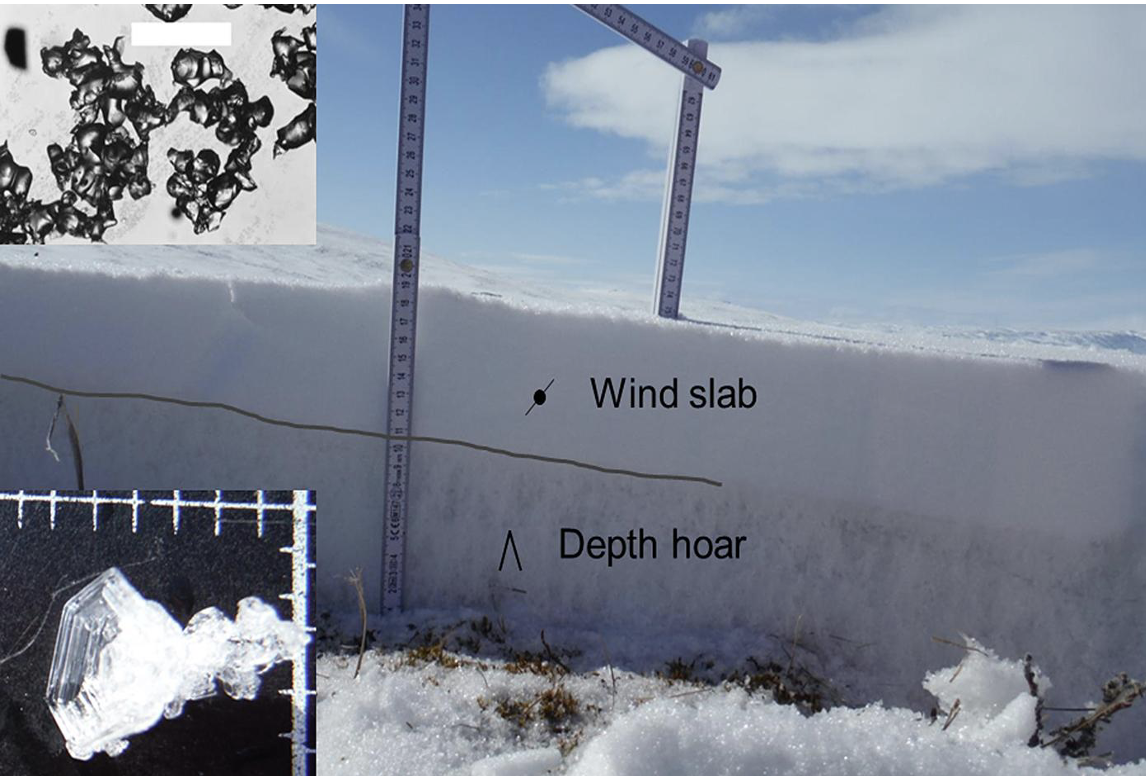Snow cover heterogeneity and its impact on the Climate and Carbon cycle of Arctic regions (SnowC2)
Fellowship project summary:
One of the current limitations of the Canadian Land Surface Scheme including Biogeochemical Cycles (CLASSIC) is the use of a single-layer snow scheme, without an explicit parameterization for the snow cover fraction (SCF) and blowing snow sublimation losses. However, blowing snow sublimation losses are significant in the Arctic, and snowpacks are typically characterized by at least two distinct snow layers (e.g., a base depth hoar layer overlain by a wind slab), which have distinct physical characteristics.

Moreover, the snow cover varies greatly at the typical scales from ~10-100 meters (due to snow–canopy interactions, snow redistribution by the wind, pronounced microtopography, etc.) to larger-scale (>1 km) due to climatic and orographic gradients. A poor representation of the spatial heterogeneity of these ‘snowscapes’ within continental-scale land surface models (LSMs) and catchment-scale hydrological models can result in biased snow cover and runoff simulations, compromising projections under climate change scenarios. As such, measuring and understanding snow cover heterogeneity, and representing it within process-based models represents one of the greatest ongoing challenges in atmospheric and hydrological sciences, which calls for innovative efforts to address this issue.
This project aims to improve our understanding of the spatial heterogeneity of the snow cover in Arctic regions and its representation within process models for more robust simulations of snow cover conditions and surface energy and carbon fluxes under current and future climates. To that purpose, new SCF parameterizations will be developed, implemented, and tested in the CLASSIC LSM. Snow CCI products will be used for this purpose, in addition to in situ stations along a Subarctic-Arctic gradient that encompasses different bioclimatic zones. In a second step, an implementation of a multilayer snow scheme and blowing snow sublimation processes will be considered to improve the snowpack evolution in the Arctic region. The influence of these new developments will be assessed against the evolution of the Snow CCI variables for different land types and for the simulated surface energy and carbon fluxes. CLASSIC will next be forced by an ensemble of climate projections from CMIP6, downscaled and bias-corrected to ERA5 to produce new improved land simulations over the whole Arctic region. Online (coupled) simulations within CanESM are envisaged through future collaboration with Environment and Climate Change Canada.
Research fellow: Mickaël Lalande
Supervisors: Christophe Kinnard and Alexandre Roy at UQTR / RIVE / GLACIOLAB (Trois-Rivières, Canada)
Host Institution: Université du Québec à Trois-Rivières

